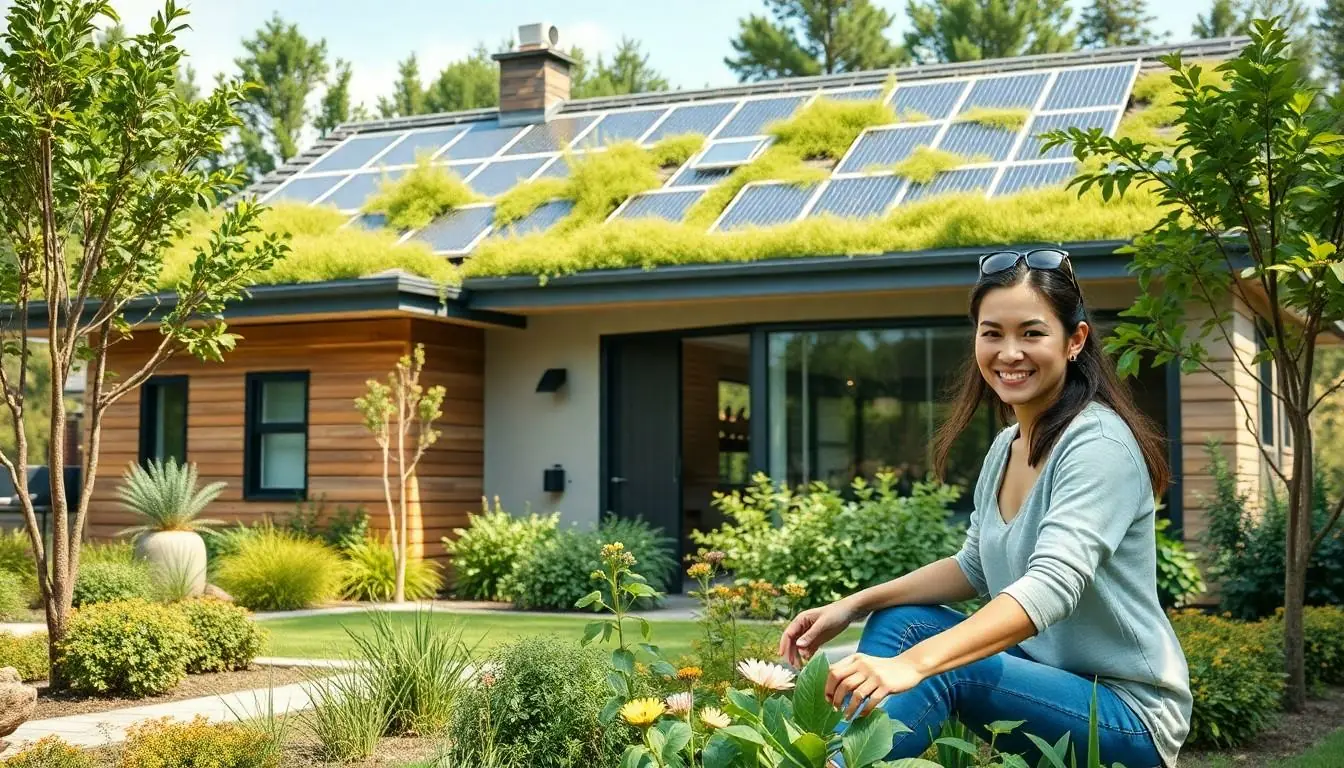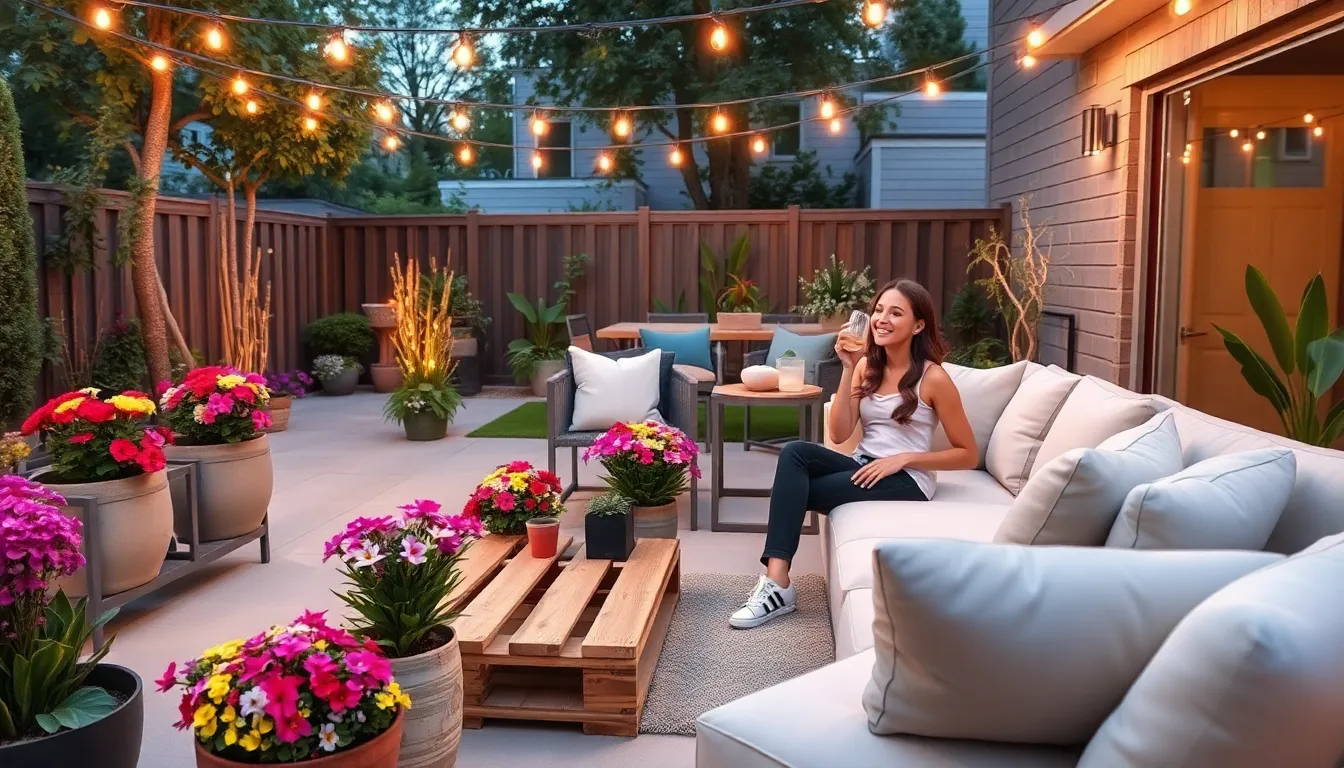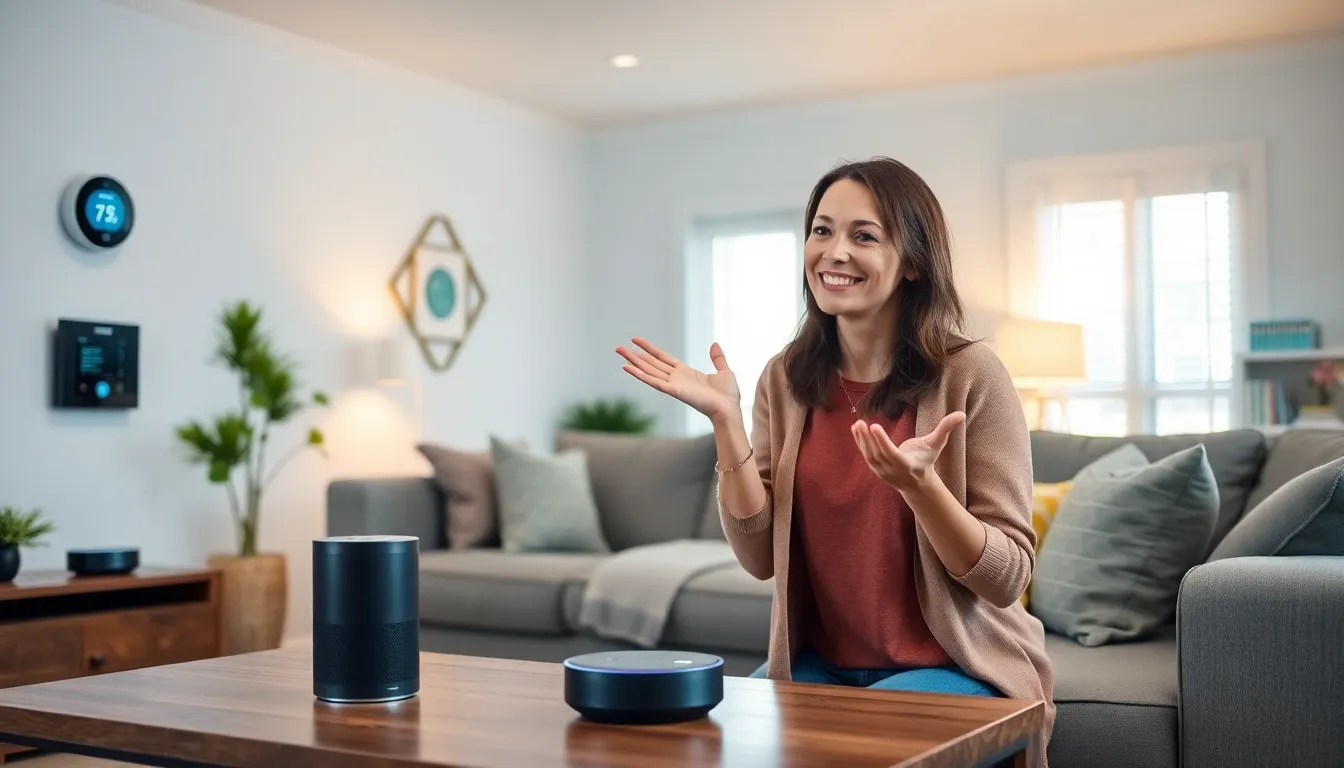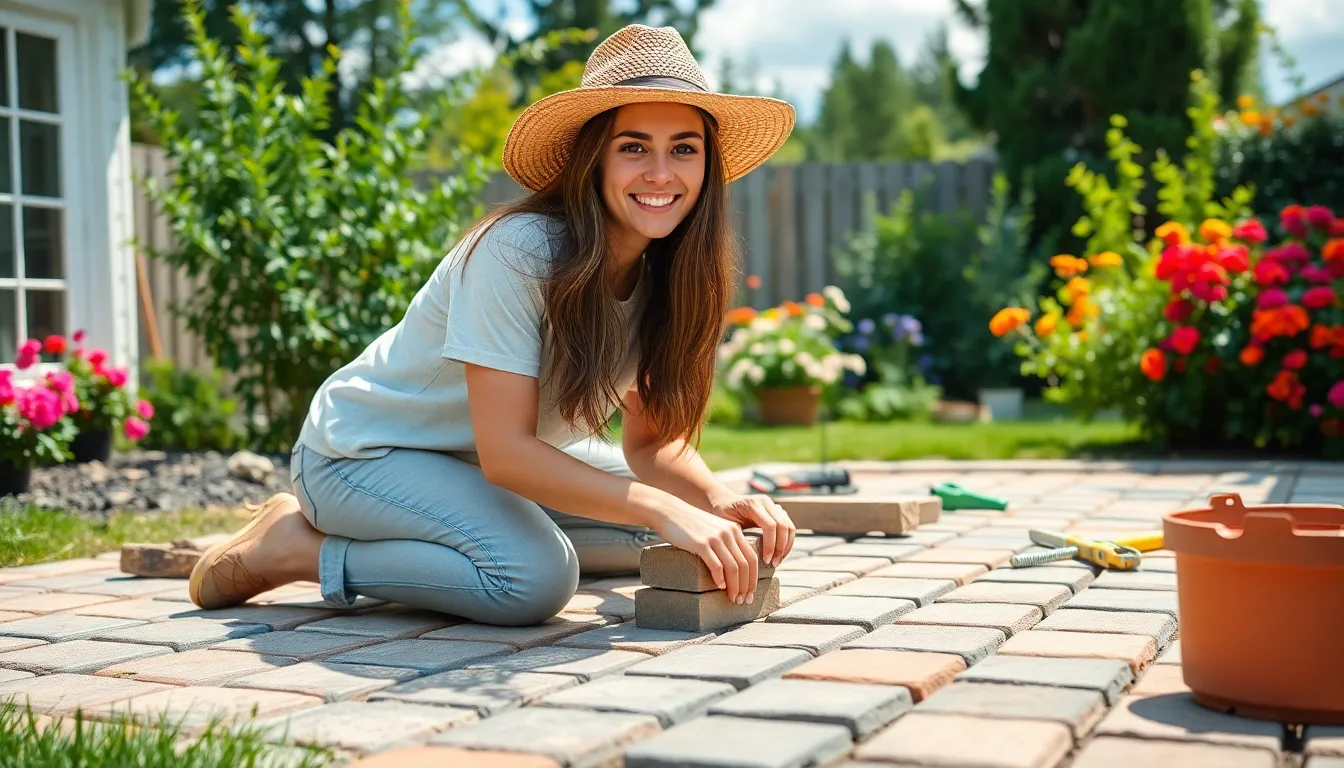Imagine waking up in a home that not only looks stunning but also gives Mother Nature a high-five every morning. Sustainable home design isn’t just a trend; it’s a lifestyle choice that combines style with responsibility. It’s about creating spaces that are as kind to the environment as they are to your wallet. Who knew saving the planet could be so chic?
Table of Contents
ToggleOverview Of Sustainable Home Design
Sustainable home design integrates environmental responsibility into aesthetically pleasing living spaces. It involves selecting materials that are eco-friendly and energy-efficient, reducing the overall carbon footprint. Prioritizing natural light significantly decreases the need for artificial lighting, enhancing energy conservation efforts.
Incorporating renewable energy sources such as solar panels enhances energy independence and efficiency. Utilizing recycled and locally sourced materials minimizes transportation emissions and environmental impact. Choosing energy-efficient appliances lowers utility bills and supports a sustainable lifestyle.
Design elements such as passive heating and cooling optimize indoor climates, relying less on HVAC systems. Rainwater harvesting systems collect water for irrigation, conserving valuable resources. Green roofs can provide insulation and reduce heat islands in urban areas.
Landscaping with native plants requires less water and maintenance, further promoting sustainability. Adopting smart home technologies allows for more efficient energy usage and remote monitoring of energy consumption. A well-designed sustainable home not only contributes to environmental health but also offers long-term financial savings.
Creating living spaces that balance beauty, functionality, and environmental responsibility reflects a commitment to sustainability. Such designs cater to modern lifestyles while prioritizing the planet’s future.
Key Principles Of Sustainable Home Design
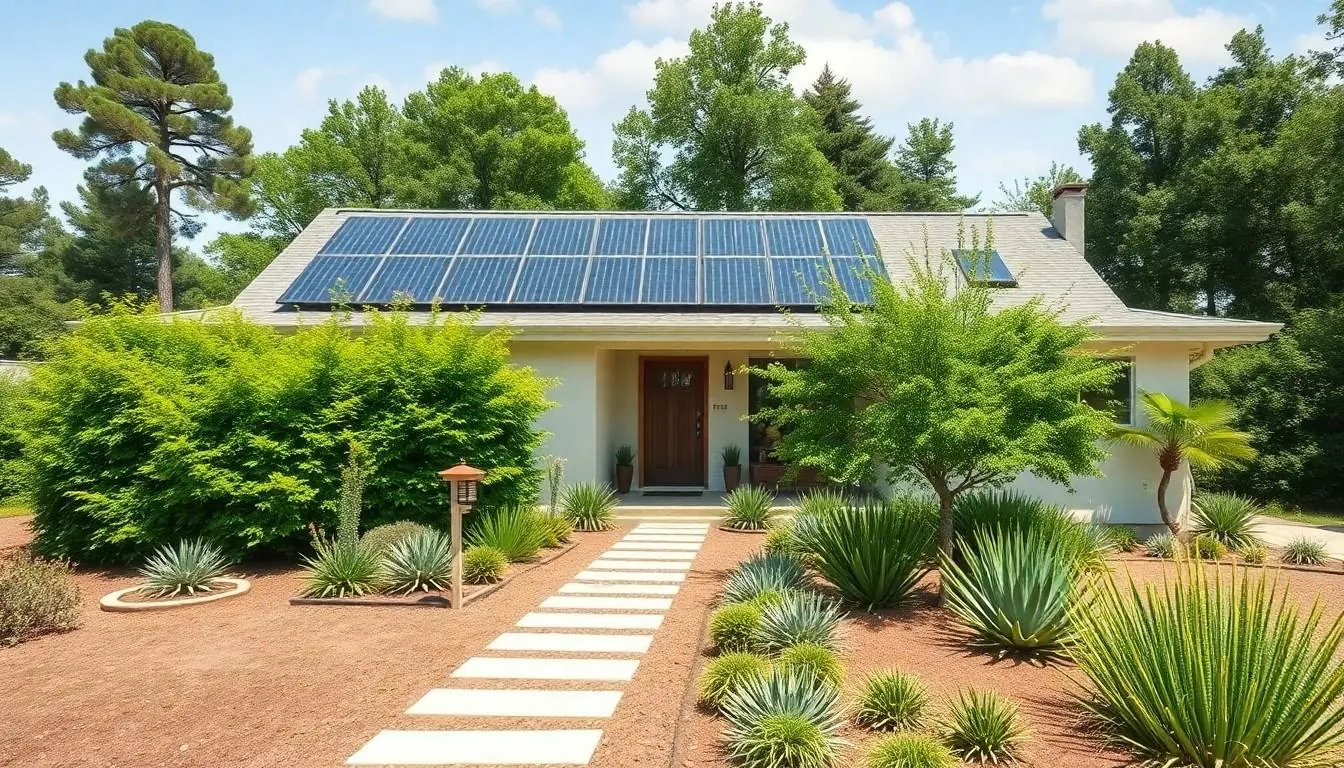
Sustainable home design encompasses several principles aimed at creating eco-friendly living environments. Following these principles fosters comfort, efficiency, and environmental responsibility.
Energy Efficiency
Energy efficiency plays a crucial role in sustainable home design. Prioritizing high-performance insulation reduces heating and cooling demands. Utilizing energy-efficient appliances also lowers electricity consumption. Incorporating smart technologies allows homeowners to monitor and manage energy use effectively. Opting for renewable energy sources, like solar panels, significantly reduces carbon footprints. Implementing these strategies not only conserves energy but also provides long-term cost savings.
Water Conservation
Water conservation is essential in sustainable home design. Installing low-flow fixtures helps minimize water usage in bathrooms and kitchens. Utilizing drought-resistant landscaping reduces the need for irrigation. Rainwater harvesting systems collect and reuse water for gardening and non-potable uses. Implementing graywater systems allows homes to recycle water from sinks and showers. These practices contribute to a sustainable lifestyle while lowering water bills.
Sustainable Materials
Sustainable materials form the backbone of eco-friendly construction. Choosing reclaimed wood enhances aesthetics while minimizing deforestation. Using recycled metal and glass reduces waste and energy consumption. Selecting locally sourced materials decreases carbon emissions associated with transportation. Incorporating non-toxic paints and finishes improves indoor air quality. These choices lead to healthier living spaces and a reduced environmental impact.
Benefits Of Sustainable Home Design
Sustainable home design offers various advantages, combining environmental consciousness with economic benefits. The integration of eco-friendly practices enhances overall living experiences.
Environmental Impact
Sustainable design significantly reduces a home’s carbon footprint. It minimizes energy consumption through effective insulation and renewable energy sources, such as solar power. Enhanced natural ventilation decreases reliance on artificial cooling systems. Incorporating native plants in landscaping reduces water usage and promotes local biodiversity. Additionally, utilizing recycled and locally sourced materials lessens waste and environmental degradation. Emphasizing these practices leads to a healthier planet.
Economic Advantages
Savings on utility bills represent one of the primary economic benefits of sustainable home design. Energy-efficient appliances and high-quality insulation result in lower energy costs over time. Homes with eco-friendly features often have higher resale values, attracting environmentally conscious buyers. Incentives such as tax credits for renewable energy installations can further enhance financial returns. Investing in sustainable practices ultimately contributes to long-term financial stability and affordability.
Health and Well-being
Sustainable home design promotes healthier living environments. Natural light enhances mood and reduces the need for artificial lighting. Incorporating low-VOC materials minimizes indoor air pollutants, benefitting respiratory health. Access to green spaces fosters physical activity and mental well-being. Furthermore, sustainable homes often encourage community-building through thoughtful landscape design and shared resources. These elements collectively contribute to improved quality of life.
Challenges In Implementing Sustainable Home Design
Implementing sustainable home design faces various challenges that impact its feasibility and attractiveness.
Cost Considerations
Initial costs for sustainable materials and technologies can deter many homeowners. Upfront investment often includes energy-efficient appliances and high-performance insulation. Although these choices yield long-term savings on utility bills, immediate expenses appear daunting. Many individuals may prioritize budget over sustainability, overlooking potential benefits. Financing options, such as green loans, are available to alleviate financial pressure. Homeowners can explore local and federal incentives to offset upfront costs, making sustainability more accessible.
Regulatory Hurdles
Navigating building codes and regulations poses significant challenges for sustainable design. Local authorities might lack clear guidelines for green building practices, creating confusion during the permitting process. Collaboration with architects familiar with sustainable standards simplifies adherence to regulations. Homeowners may also face restrictions on specific materials or energy systems. Engaging with local governments can promote policy changes that favor eco-friendly designs. Awareness of regulations helps ensure smoother project execution while fostering a supportive environment for sustainable practices.
Sustainable home design represents a harmonious blend of aesthetics and environmental stewardship. By prioritizing eco-friendly materials and energy-efficient practices, homeowners can create spaces that are not only visually appealing but also beneficial for the planet. The integration of smart technologies and sustainable strategies fosters a healthier living environment while offering economic advantages.
Embracing this design philosophy encourages a lifestyle that values both beauty and responsibility. As individuals navigate the challenges of implementation, the rewards of sustainable living become increasingly evident. Ultimately, sustainable home design reflects a commitment to a better future for both residents and the environment.

